We all know the division of card types in MLP CCG, among friends, resources, troublemakers, and so on. We often think of building decks in terms of a certain number of each. With this article, I'm going to introduce an alternate way to think of categorizing the material that makes up decks. Rather than the type printed on the card line, think of cards in terms of these broad roles.
- Mane character boost
- Mane color development
- Secondary color entry
- Secondary color development
- Cards of top tier strength - "business" cards
Here's what I mean.
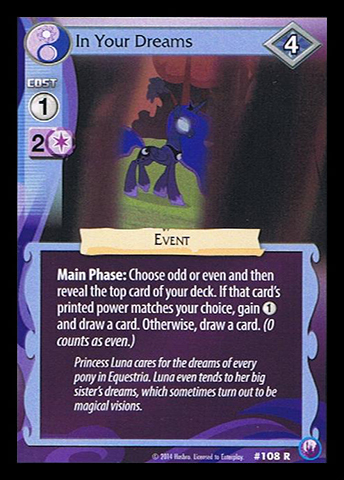
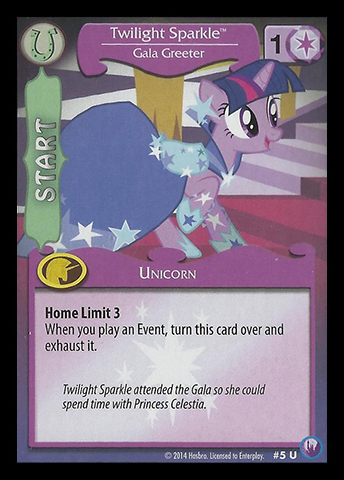
In Your Dreams is the prototypical example of a mane character boost card, in particular for Twilight Sparkle Gala Greeter. This card produces nothing positive, unable to do anything more than just replace itself and the action spent on it. Boosting TSGG is the only reason you would include In Your Dreams in your deck; it has no function towards deploying power and solving problems and scoring and winning. (Aside from combo shenanigans with Twilight Element of Magic where it can gain an action.)
Other examples include troublemakers for Rainbow Dash Flier Extraordinaire, and friends of 3 power and low requirement for Applejack Apple Vendor to buff to 5. These may be cards that don't really serve the deck's aims and that you might not really want. But you need them to ever be able to boost your mane character.

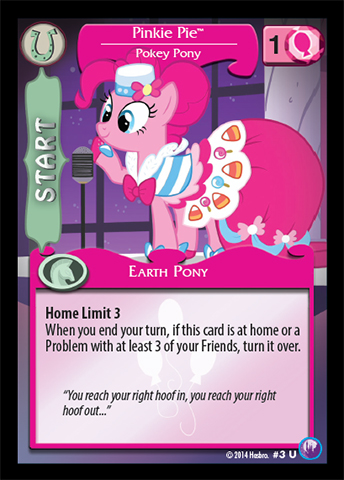
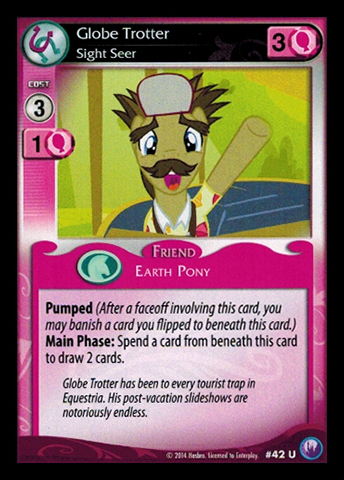
Mane color development is an often overlooked aspect of deck design. Some mane characters flip slowly or unreliably enough that you cannot rely on their boosted power to play cards of their color. Both Pinkie Pies display this: Party Animal's flip can be blocked easily, and Pokey Pony needs you to play friends before the mane's boosted power can be available for requirements. So Pinkie decks need to include something like Globe Trotter or Lucky Streak with a requirement of just 1 pink, in order to be able to play any higher requirement pink cards.
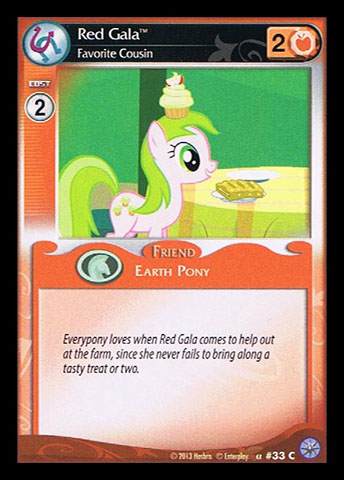
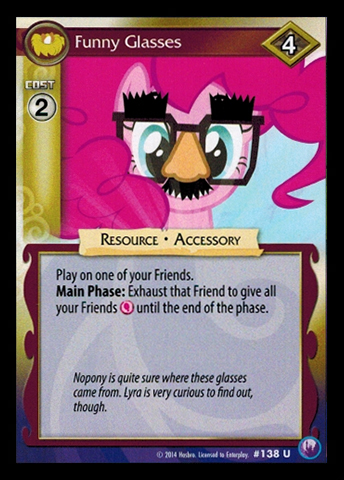
Secondary color entry is a well-known concept. To play cards of a color other than your mane character, you need something like Red Gala which provides orange power with no orange requirement. Canterlot Nights brought new ways of entering some colors, which shows that thinking of decks in terms of friends and resources may not be so accurate. Funny Glasses as a resource fills the same role for entering pink as Apple Brown Betty does as a friend.
Entry friends are almost always the weakest slots of a deck. They usually have no abilities, flip low in faceoffs, and are redundant dead weight when you draw extra copies. But every deck has to have some, or else it will leave its own problems impossible to ever confront.
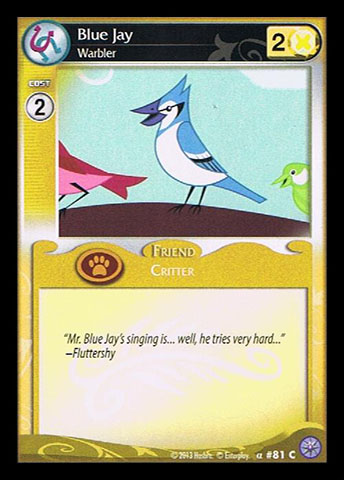
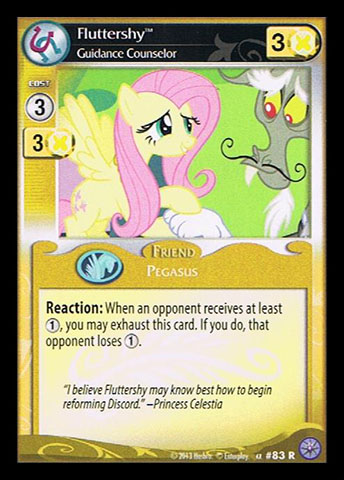
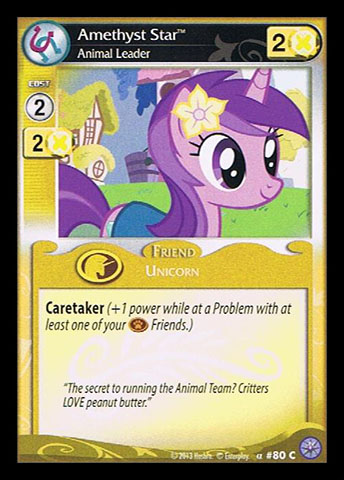
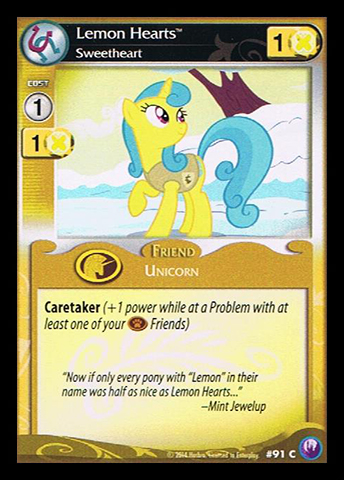
And depending on the characteristics of your secondary color entry, you may need secondary color development. An established example is found in Premiere decks that run yellow as a secondary color, such as the "Rainbow Dash Wins" blue/yellow aggro deck. Fluttershy Guidance Counselor is perhaps the best of all business cards in the game, but you don't always draw enough yellow entry to enable her 3 requirement. Adding Amethyst Star improves that color development curve, even if Amethyst might not be at top tier power in her own right. And then in Canterlot Nights, Lemon Hearts does the same thing better, developing directly from 1 to 3 yellow power on the board for cheaper.
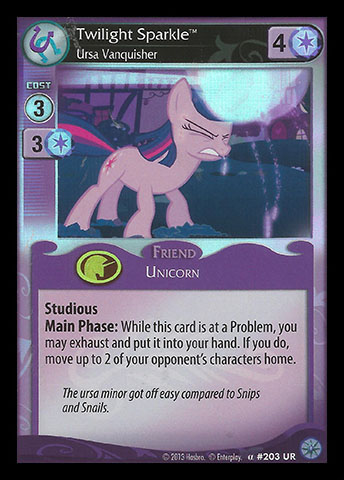
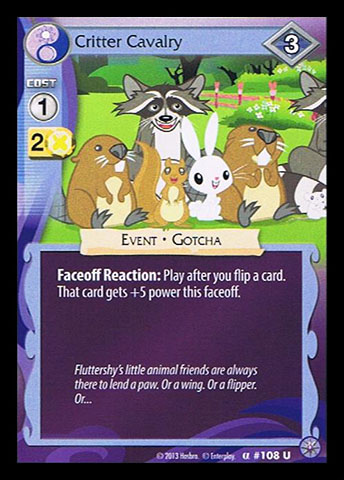
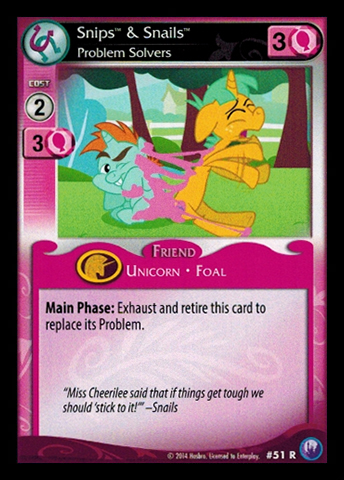
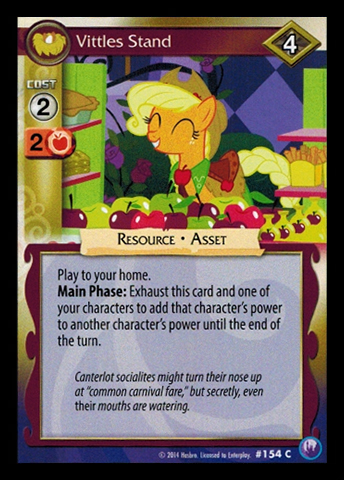
Finally, "business" cards are the pieces you really want to be playing. They deliver lots of power for their cost, sizable action or movement advantage, board control tools, or often multiple of those advantages combined. Whether these are friends or events or resources doesn't so much matter. These are the power cards that enact your deck's strategy and win games, whatever their type and method. If you could, you'd pack a deck entirely full of these while neglecting the weaker categories. But you can't thanks to the difficulty in satisfying their color requirements, which force a development curve of ramping up through lesser cards first before you can reach these powerhouses.
The best decks in MLP are those that can minimize, combine, or even eliminate the need for weaker card roles.
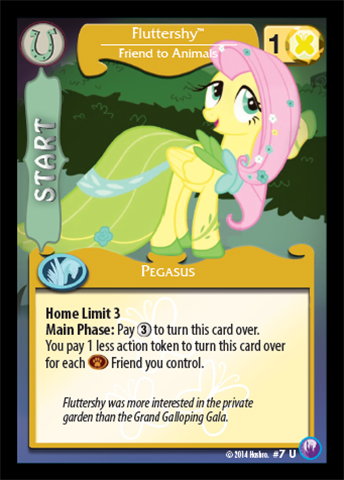
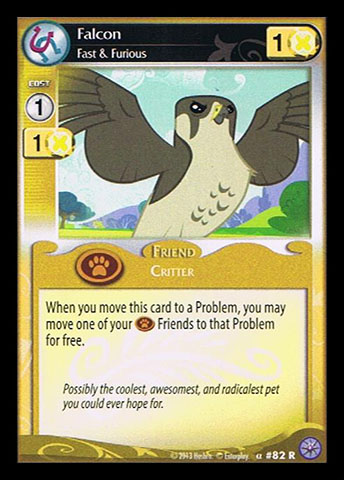
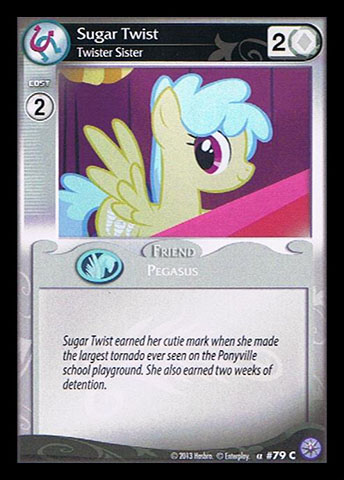
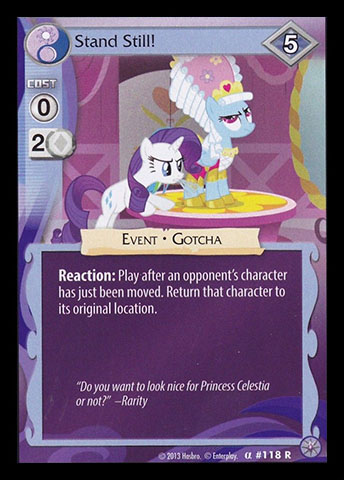
The yellow/white aggro deck "Ballroom Blitz" displays this excellently. First, Fluttershy Friend to Animals needs no boost enabler or mane color development at all, since she can always flip by just paying 3 actions. Critters like Falcon and Forest Owl help her boost and enable her movement ability - and in their own right also serve as business cards well worth playing with movement and power advantage. Ballroom Blitz still needs secondary color entry in Sugar Twist, but not any further secondary color development, as the rest of the white portion in Stand Still and Rarity Truly Outrageous is all playable from any one single white entry friend.
The sum total of this design gives the deck enormous power. Ballroom Blitz yields only 9 precious deck slots to weak card roles, its white entry. Every other card in the deck belongs to a top tier power level, even the 1-cost critters for their role in enabling Fluttershy's special move. So this deck maintains excellent consistency as a game progresses. It has very few dead draws, almost always topdecking more power each turn, thanks to eliminating the need for any boost enablers or color development.

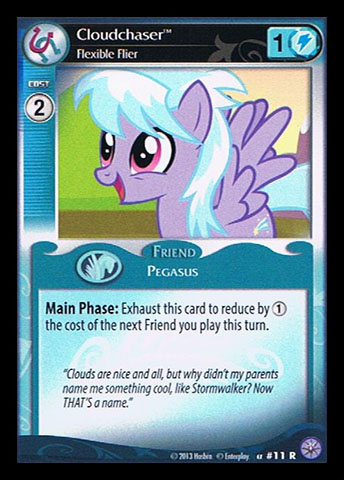
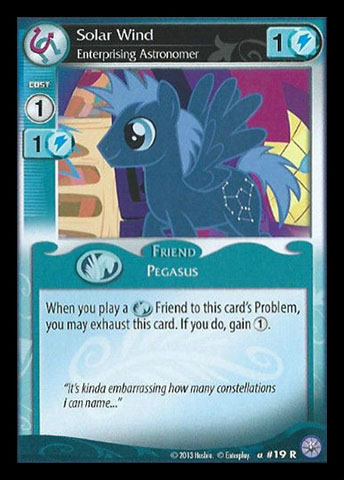
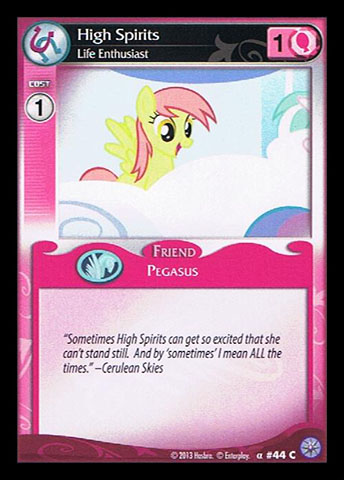
Conversely, the best cards are those that fill multiple roles. The blue/pink aggro deck "Pegasus Explosion" is designed around this sort of synergy. Cloudchaser is our prime example of a multifunctional card. She helps boost Rainbow Dash Hanging Out, being a pegasus. She develops blue into Wild Fire or Orange Swirl or Holly Dash. And she packs a tremendous action advantage ability of her own for business. Yeah, we all know that Cloudchaser is good, but it can help to write out and describe exactly why. ("Flexible Flier" is a very apt appellation!)
Pegasus Explosion even manages to take advantage of its secondary entry friends for additional purposes. Flitter and High Spirits just happen to be pegasi to also boost RDHO and combo with Solar Wind. These extra one-drops are always useful later game when a Forest Owl is around. And Flitter and Lily even do have abilities as entry friends. And having Cloudchaser around makes them free. These details add up to Pegasus Explosion also having very few dead draws late game, since even the color entry serves additional roles and remains useful.
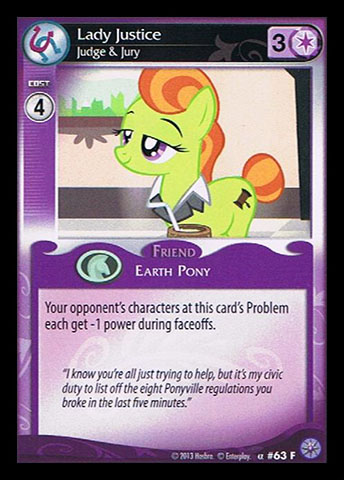
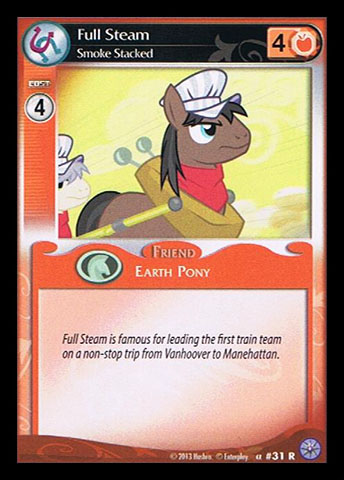
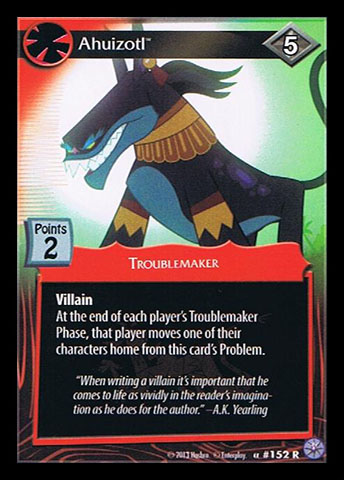
The purple/orange control deck "Big Bombs" achieves deck harmony not through multipurpose entry but by minimizing it. It uses colors whose entry are the high power Full Steam and Lady Justice. And it actually includes less color entry and development than most decks, which it can do thanks to villains to slow the game for time to draw into that good entry. So it doesn't have to dilute the deck and its faceoff flip power with weak cards.
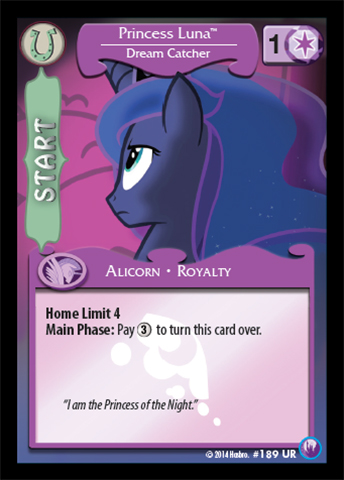
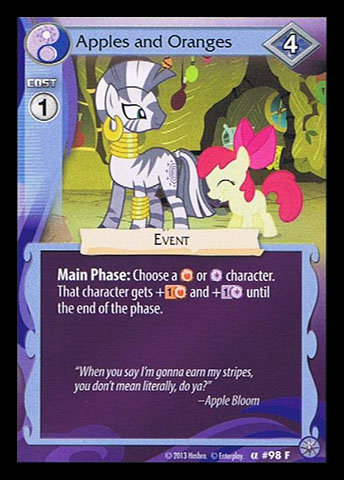
We can also talk about Princess Luna, Dream Catcher here. The event searching ability costs too much: there is hardly any event in the game worth playing for three more cost than its face value. But this Luna allows you to build a deck with no color development needed at all, since you can always fetch a color fixer event. If Luna saves you three dead draws of secondary color entry, or lets you steal a faceoff when the flip is a 5-power business card instead of a 1-power entry friend occupying the slot, then perhaps she is worthwhile after all.
In fact, the strength of a color in the metagame is largely defined by the characteristics of its entry and development. The Canterlot Nights metagame put yellow so clearly on top not just because it has strong cards, but also because it can fill nearly every slot in the deck with those strong cards thanks to not spending space on boosting or development. And white emerged as the best secondary not just because of its power cards, but also the simple presence of an extra 2:2 entry in Sapphire Shores to easily enable them.
By contrast, purple is the opposite, with great cards on the top of the power spectrum but cumbersome entry and development, with mane characters that are slow or troublesome to boost and a lack of versatile low-requirement friends. Even yellow operates only as a mane color, not secondary, thanks to the nature of the color entry which is all weak critters that consume too many precious deck slots. These critters lend great function with Fluttershy and Caretakers around, but become dead weight when their critter-ness isn't an asset.
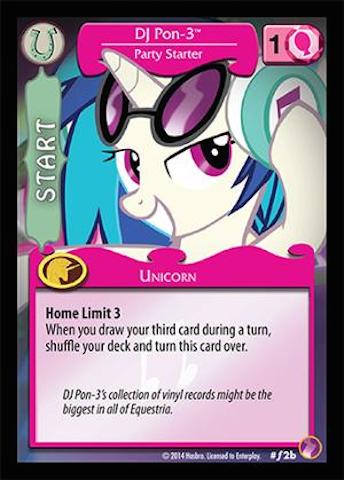
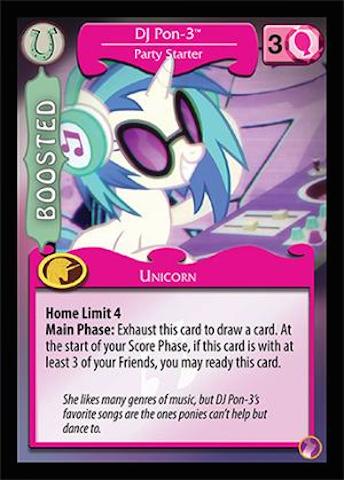
And Rock N Rave with one single card slammed the metagame dramatically in pink's favor. DJ Pon-3 completely blows up pink deckbuilding. She saves as many as twelve slots of entry and development in a deck! Not only does she automatically boost into 3 pink power, she also provides a turbo draw engine with nearly guaranteed access to color fixer events, to minimize or eliminate your secondary color entry too. Take any deck and change its 12 weakest cards into 12 of the best in its colors and you'll find a metagame monster, as we saw in the Continental finals at Gen Con. All the DJ decks in the Top 8 had the ability to jump directly into Bell Tower or Snips & Snails or Rock Paper Scissors or Party Started, avoiding the need to spend any cards or deck space on developing the color.
So I hope this article has helped illuminate the process of building the best decks. It isn't just a matter of picking the strongest cards and colors, but also involves managing the requirements and development of those colors to keep the most space for strong cards and combos. Use this information in your next deck designs, and have fun!